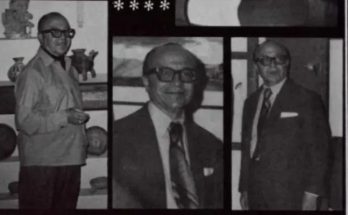By Luis Felipe Rodriguez Palacios
Last week we were talking about the old market and the people who sold there. Now we are going to continue with this description.
In the corridor to the left, when entering the market through the San Francisco de Sales school door, were the stalls of the Mendoza family, run by the well-known Doña Lupe Cervantes. In front of her stall was Don Mercedes, who sold vegetables. In the back was “la Negrita,” who ran Chava López. Parallel to Calle Mesones were the shoe stores of Sr. Cuéllar, “el cubano” Albertano Olvera, and Benito Olvera and his wife. In front were the chocomiles stand of the Mora family and to the right, “Bambi.” Paty Ramírez recounted that her grandmother, Sra. Eduviges, sold bread and aromatic herbs. Her son, Genaro Ramírez, founded and directed the Río Rita Orchestra and was part of the Savoy Orchestra. Another stall owner was Juan López, who was also president of the Union of Tenants and father of José López, who was a taxi driver for many years. Don Domingo sold yarn.
Past the door, Gorgonio Zúñiga and Don José sold seeds. Next to the southwest door was Doña Manuelita. Entering from Calle Insurgentes was Arco Iris, Don Santiago Ramírez’s butcher shop was on the left and Don Chano Ruiz’s El Pavo on the right. Entering from calle Colegio Jorge Muñiz’s butcher shop was on the right, and down the hall was Antonio Sánchez’s butcher shop. To the left was Pancho Matehuala’s seed stand, which he ran with my Aunt Chole. In front of his stall was that of Don Luis Ramírez and his sons. José Cabrera, Pedrito’s father, was also there; for many years he played in the Allende Ensemble.
In the center of the market were two quarry-stone images of the Virgin of Guadalupe, one looking north and the other south. One stood on the corner of Insurgentes and Pepe Llanos for many years. Chuy, my brother-in-law, tells me that initially water fountains were provided for the tenants (Pancho heard this from Don Chano, the butcher). Chuy still has the program from when the Morenita monument was inaugurated in 1954.
Around the statues of the Virgin, Doña Mary, Doña Chencha, and others sold atole. Panchito Ruiz, head of the tenants for two periods and son of Chano Ruiz, remembers Sra. Juana Vargas (not related to Juan Vargas), Prisciliana Gutiérrez, Juan Santana and María, and his brother Miguel Martínez, who sold costume jewelry. His colleagues called him “the jeweler.” Miguel Ramírez and his uncle, Don Dimas, also remember Manuel González and his little grocery store called La Rosa del Tepeyac. Panchito Ruiz remembers that Enrique Rangel, Juanita’s father, was the founder and for many years president and general secretary of the Union of Tenants. That union was started in March 1953.

At some point, the market must have been very large, but the growth of the population made it increasingly inadequate, and it frequently was overly crowded. Access points were opened along Calle Mesones. Don Rómulo and Doña Amparo sold fruit, and the steps along Calle Colegio were full of greengrocers. I was struck by the way Vitrolas and Aguileño tied up their greying hair on top of their heads with twine. It reminded me of the tepees of the North American Indians that we saw in the movies. Don Atilano was also located on the steps, and further down were Don Beto and Doña Concha. Vendors and buyers came down the steps and continued along Mesones, Colegio, and Insurgentes. The market extended to the Plazuela del Fresno (Don Alberto Arteaga and several others were there). Outside the Mercantile Balance of Don Cruz Téllez everything was commercial. There were the greengrocers Santoyo, Cirilo, Pancho and Mario, Raúl (son of Don Hilario, who later had a seafood restaurant on the same street), and Don Ildefonso Tovar, “El Cerillo.” The only telephone in San Miguel for many years was in the Mesón de San José on Calle Mesones. Tenants would call out whenever there was a call for someone. Public toilets were also at the Mesón.
On Calle Soledad, in front of La Salud church, was an inn belonging to Doña Josefina, who made a delicious turkey mole. Other vendors were Doña Vicenta, Doña Clara, Doña Lucia Arteaga, Doña Lourdes (Irma Valenzuela’s aunt), Doña Toña, Doña Consuelo Yáñez (where the creamery was later located), Doña Chole, Doña María Luisa Chávez, who served delicious menudo, and Doña Jacinta, mother of Concho Ceballos, who sold raspas.
Outside the inns were carnitas and barbecue stands, along with a multitude of vendors who brought their wares from the ranches and on the weekend. They sold products in the middle of the street, filling it with color, smells of freshly cut herbs, and the classic cries of the vendors who offered “the best prices.” Also in the middle of the street was warehouse where “Che” Téllez kept oil drums that he sold on the corner of Juárez and Mesones, where a gas pump still stands as testimony of times gone by.
(To be continued)




